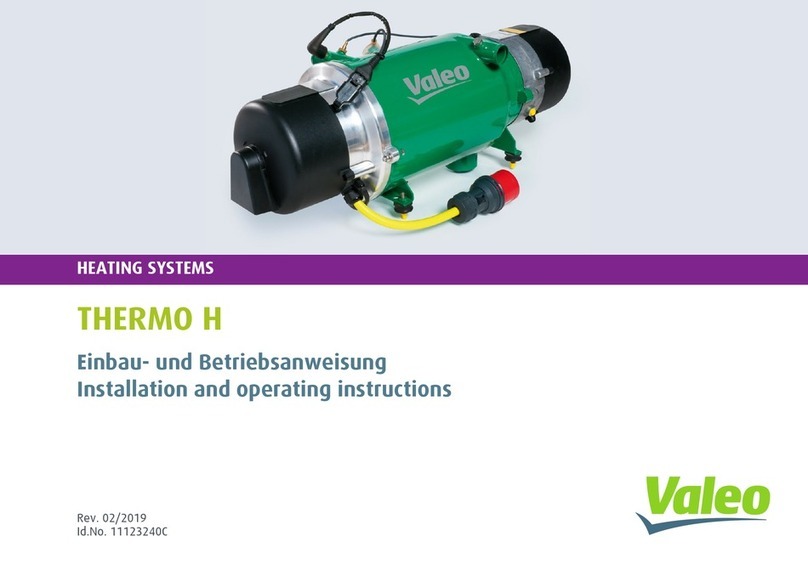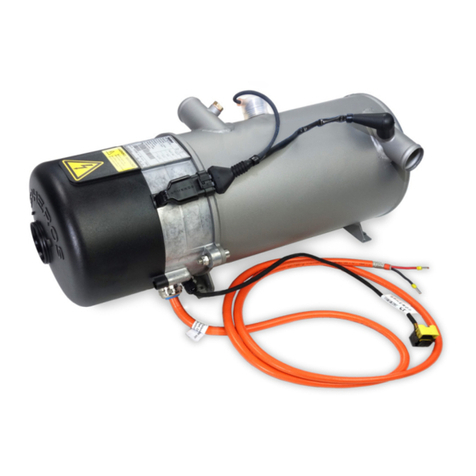
101
Thermo G 1 Introduction
1Introduction
1.1 Content and purpose
This workshop manual is intended for the maintenance
and repair of the water heaters (hereinafter heaters)
Thermo G300 on the gas low pressure side.
Work on the heater must only be carried out by
trained and / or by Valeo-trained personnel.
Any work on the gas supply line, for example when
removing or installing the gas regulator, may only be
carried out by persons with the appropriate official
authorization.
1.2 Meaning of warnings and highlighted
content
Throughout this manual the emphasized words Warning!,
Caution!, ATTENTION: and NOTE: used as follows:
This caption is used to indicate possible severe inju-
ries or fatal accidents if instructions or procedures
are carried out incorrectly or entirely disregarded.
This caption is used to indicate possible minor inju-
ries if instructions or procedures are carried out
incorrectly or entirely disregarded.
ATTENTION:
This caption points to actions which may cause ma-
terial damage.
NOTE:
This caption is used to draw attention to an important
feature.
1.3 Further documentation to be used
In the Thermo G Operating and Service Instructions
you will find all the necessary information as well as useful
hints relating to the safe operation of the heater.
The Thermo G Installation Instructions contain all
required information as well as useful hints for the correct
installation of the heater.
Spare parts required during maintenance and repair, you
can order using the Thermo G Spare Parts List at Valeo.
If necessary, Valeo will publish Technical Information
(TI) for operation, maintenance or repair of the heater.
The Heater Accessories Catalog contains useful acces-
sories for your heater installation.
All mentioned documents you will find on the Valeo
website www.valeo-thermalbus.com/eu_de/Service.
1.4 Safety information and regulations
Basically, general accident pevention provisions and the
valid industrial safety directions must be adhered to.
"General Safety Regulations" which exceed the frame-
work of these provisions are listed below. The specific
safety regulations which affect the present manual are
issued in the individual sections or procedures with
headings in capital letters.
1.4.1 General safety regulations
Read the Thermo G Operating and Service Instruc-
tions before operating the heater for first time.
Familiarize yourself with the Thermo G Installation
Instructions before you make any modifications to the
existing heater installation.
NOTE:
The Thermo G Operating and Service Instructions contain
safety instructions and regulations to be followed for safe
operation of the heater.
The Thermo G Installation Instructions contain the
statutory regulations and other safety hints and regula-
tions for the proper installation of the heater.
Danger to life and health!
Warning!
Danger to life and health!
Warning!
Hazardous to health!
Caution!
Danger to life and health!
Warning!




































